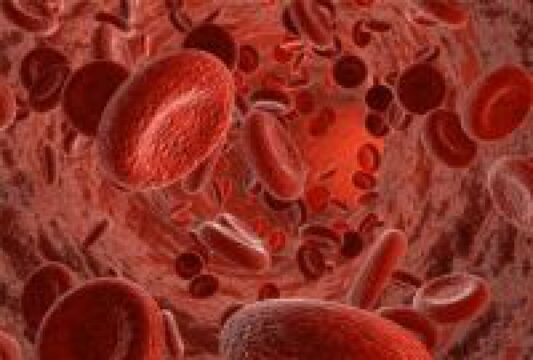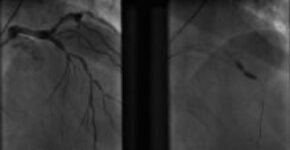Original title: Elevated Plasma Fibrinogen Rather Than Residual Platelet Reactivity After Clopidogrel Pre-Treatment Is Associated With an Increased Ischemic Risk During Elective Percutaneous Coronary Intervention. Reference: Lawrence Ang et al. J Am Coll Cardiol 2013;61:23–34. Platelet function tests have identified differences in the response of each patient to clopidogrel and minor platelet inhibition has been associated with thrombotic…
Ticagrelor, even better than we thought
Original title: Reduction in First and Recurrent Cardiovascular Events with Ticagrelor Compared with Clopidogrel in the PLATO Study. Reference: Payal Kohli et al. CIRCULATION AHA.112.124248. In analyzing randomized and monitored study outcomes, we usually observe that after the occurrence of any primary outcome event patients are typically blocked for further analysis. This practice limits the information on subsequent…
Ambulatory Transradial Percutaneous Coronary Intervention
Original title: Ambulatory Transradial Percutaneous Coronary Intervention: A Safe, Effective, and Cost-Saving Strategy. Reference: Philippe Le Corvoisier et al. Catheterization and Cardiovascular Interventions 81:15–23 (2013). The number of PCI procedures has increased and for many interventional cardiology centers PC interventions entail significant resource consumption. Reducing post procedure hospital stay could reduce costs and optimize hospitalization resources. The safety…
Recommendations on occupational radiation protection in interventional cardiology
The evolution in experience of the operators together with the continuous improvement of devices have allowed new procedures that we did not perform a few years ago and that we never imagined possible, not even for the most enthusiastic of interventional cardiologists. Not a huge intellectual effort is required to say that the future…
Rotational atherectomy is only an interim strategy.
Original title: High-Speed Rotational Atherectomy Before Paclitaxel-Eluting Stent Implantation in Complex Calcified Coronary Lesions. The Randomized ROTAXUS (Rotational Atherectomy Prior to Taxus Stent Treatment for Complex Native Coronary Artery Disease) Trial. Reference: Mohamed Abdel-Wahab et al. J Am Coll Cardiol Intv 2013; article in press Heavily calcified lesions are difficult and may prevent the appropriate expansion of a…
Outpatient coronary angioplasty, is it possible?
Original title: Assessment of Clinical Outcomes related to Early Discharge alter elective Percutaneous Coronary Intervention: COED PCI Reference: Purushothaman Muthusamy MD, et al. Catheterization and Cardiovascular Intervention 81:6-13 (2013) The standard procedure in most institutions is that after angioplasty (PTCA) patients are discharged the next morning. There are some reports in which they were ambulatory but the safety…
Chronic Total Occlusions, challenging but very possible
Original title: Predictors of Reocclusion After Successful Drug-Eluting Stent–Supported Percutaneous Coronary Intervention of Chronic Total Occlusion. The Florence CTO PCI Registry. Reference: Renato Valenti et al. J Am Coll Cardiol 2013; article in press. Previous registry data have shown a reduction in mortality rates in patients with successful recanalization of a Chronic Total Occlusion (CTO) compared to patients…
Does the systematic use of clopidogrel reduce events prior to angioplasty?
Original title: Association of Clopidogrel Pretreatment with mortality, Cardiovascular events, and Major Bleeding among patients undergoing percutaneous coronary intervention. A systematic review and Mata-analysis. Reference: Anne Bellemain-Appaix, MD et al. for the ACTION group. The loading of clopidogrel before coronary angioplasty is an accepted practice by most clinical and interventional cardiologists but, nevertheless, it is only based on…
Self-expanding stents improve positioning in primary angioplasty
Original title: Self-Expanding Versus Balloon-Expandable Stents in Acute Myocardial Infarction: Results From the APPOSITION II Study Reference: Robert-Jan van Geuns et al. J Am Coll Cardiol Intv 2012;5:1209–19 Acute myocardial infarction is associated with vasoconstriction and thrombus occlusion. Resolution of these two points during the first hours after primary angioplasty can lead to poor extension and poor positioning…
Revascularization reduces mortality in patients with high risk coronary artery disease based on multi-slice CT
Original title: All-cause mortality benefit of coronary revascularization vs. medical therapy in patients without known coronary artery disease undergoing coronary computed tomographic angiography: results from CONFIRM (Coronary CT Angiography EvaluatioN For Clinical Outcomes: An InteRnational Multicenter Registry) Reference: James K Min et al. European Heart Journal (2012) 33, 3088–3097 doi:10.1093/eurheartj/ehs315. Several large studies have shown revascularization reduces mortality…
More evidence supports ventricular assist devices in complex angioplasty procedures
Original title: Percutaneous Left Ventricular Assist Device with Tandem Heart for High-Risk Percutaneous Coronary Intervention: The Mayo Clinic Experience. Reference: Oluseun O Alli, et al. Catheterization and Cardiovascular Intervention 80:728:734 There is a small group of poor surgical patients admitted for surgery that due to complex comorbidity, coronary anatomy and compromised left ventricular function that can be treated…










